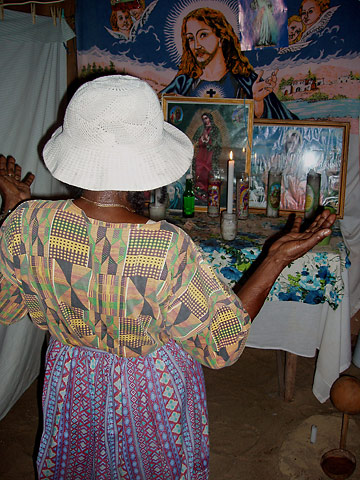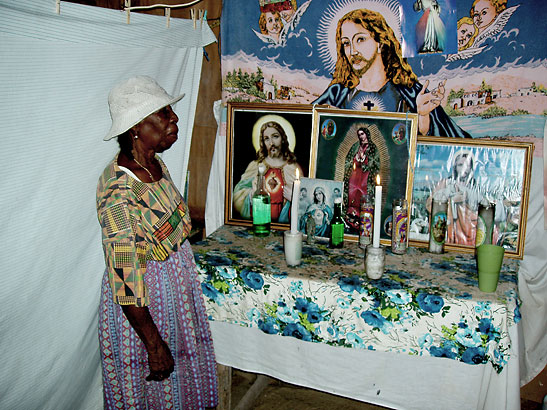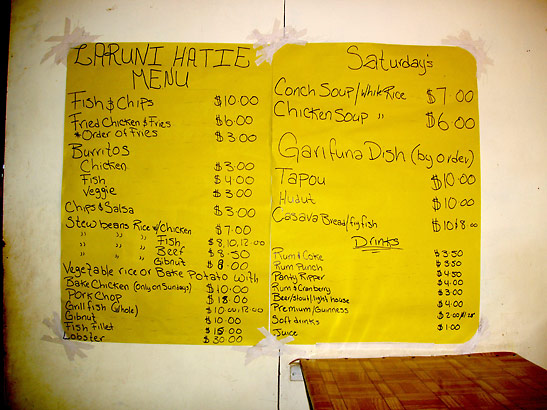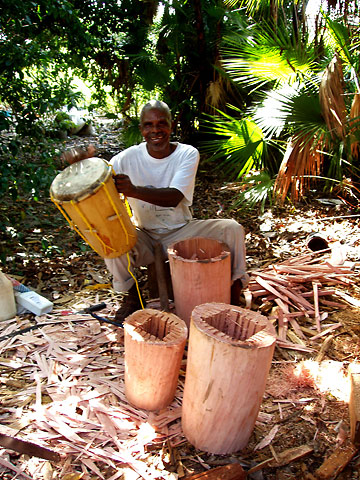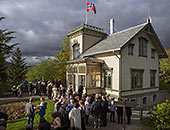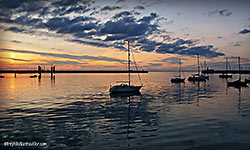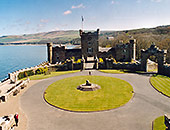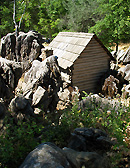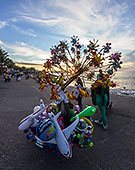 |
 |
|
 |

|
Belize:
A Central American Country that Doubles as a Caribbean Island
Story by Fyllis Hockman Photos by Victor Block
Belize, an increasingly popular U.S. travel destination that is part Central American country, part Caribbean island, is home to a fairly large Garifuna population. Garifuna, you say? Never heard of them. Part of the melting pot civilization which comprises Belize, the Garifuna share the land with Creole, Mayan, Spanish, Mennonite, Chinese and other neighbors but their language, customs, foods and religion are unique. An amalgam of the Carib and Arawak Indians who first migrated to the Caribbean and later intermarried with West African slaves who escaped to St. Vincent in the 1600s, the Garifuna have a colorful history combating the British before settling in Honduras and British Honduras (now Belize) in 1832. Although there are about 7000 Garifuna currently in the country, the spiritual population is a lot larger. “Our ancestors are all about us,” explains Lawrence Casimiro, our guide through the village of Hopkins. “Just as we must eat and drink to live, so must they be nourished as well.” This is something the ancestors take very seriously. If they perceive they are being neglected, the dead return, most often through dreams, to remind the living that they are in need of nourishment. If this message goes unheeded, the spirit may get angry and make a family member sick –- often with an illness that defies modern medicine. The ancestors do not take kindly to being forgotten. In the town of Seine Bight, the task of healing falls to 78-year-old Erdangela Polonio, the chanting woman behind the curtain. As the village Buyei, or healer, she has been appointed by the spirits to carry forth the practices and ceremonies that hopefully will appease the ancestors and restore health to the afflicted. This is no simple task. The ancestors are not easily appeased.
The Buyei knows whether the illness is of the spirit world or the modern one, and if caused by an ancestor, what he or she wants. This knowledge comes at a price but not a high one. When I asked what happens if the ailing can’t afford the costs of healing, she replies that any kind of offering would do. She illustrates by holding up a candle, a plantain, and finally a bottle of light-colored liquid: “The spirits love rum,” she declares, with no hint of irony in her smile. In any case, a Dugu must be held, and that takes some advanced planning. Before this ceremony, which will last several days and bring together an extended family from miles around, much must be done. The family brings more offerings to the temple, such as chicken, coconuts and cassava bread, staples of the Garifuna diet.
The Buyei organizes the gifts, administers healing herb baths to the sick, and prays over candles to chase away evil. Fishing trips are made to provide the spirits with their favorite catch; pigs are raised to supply the meat served during the celebration and special foods consumed by the deceased over his lifetime are prepared. But the Dugu is where it all happens. This is where the ancestors will accept or reject the many attempts to appease them. Food and drink, always appealing to guests of whatever world, are in abundance. There is non-stop singing, drumming and dancing –- all of which, including the specially made drums, are uniquely Garifuna. The music is so emotionally driven, so physically pervasive, so demanding of appreciation that if I were a dead ancestor, I would not be able to resist making an appearance.
And it is not unusual for the spirits to do so, often through the body of one of the guests. Call it “possessed,” “speaking in tongues,” or just an expression of vivid imagination, the “chosen” person is thus revealed, to then be approached by other relatives asking questions of the “visitor” -- and apparently often receiving answers. There is a strong emphasis on having fun, entertaining the spirits -– as well as imbibing them -- and promoting peace and harmony among the family members. The ancestors, who are very social, don’t take kindly to dissension. Santos Gonzales, a Hopkins resident, told me how skeptical he had been of such primitive beliefs -– until his 10-year-old son contracted a serious skin condition that defied modern remedies. His sister-in-law talked him into calling for a Dugu on the premise of what he described as “what-have-you-got-to-lose logic.” His son was cured, and now 24, hasn’t been sick since. He became a believer. The problem with developing nations is keeping them from becoming over-developed and just as Belize is dealing with that as a country, so are the Garifuna struggling to preserve their customs and lifestyle. Their culture, like all unique cultures worldwide, is being eroded by westernization in the form of media bombardment, inter-marriage and yes, supermarkets which discourage the labor-intensive preparation of native foods. There are efforts underway to preserve their dances, music and spirituality as well as retrieve what’s lost. The language, existing only in spoken form up until recently, is now being recorded into dictionaries and books. “We welcome visitors with an open heart,” assures Lawrence, “but don’t try to change us. Our music, language, beliefs –- we don’t want to lose them to an encroaching world.” Still, he does recognize some of the drawbacks of living within such a close-knit community. Caught walking hand-in-hand with a new girlfriend, he was admonished by his mother to stop dating her. “She’s your cousin,” she explained. When the same scenario occurred again, he lamented, “Everyone’s my cousin!” Which becomes even truer every November 19th when many in Belize become Garifuna for a day during the weekend-long celebration of Settlement Day, a re-creation of the arrival of these unique people to Belize in 1832. They have survived and thrived since –- a tribute to their enduring customs and culture little known beyond the borders of Central America. For more information call the Belize Tourism Board at (800) 624-0686 or log onto travelbelize.org Related Articles: (Posted 11-10-2011) |
|
|
| ||||
|
| ||||
|
| ||||
This site is designed and maintained by WYNK Marketing. Send all technical issues to: support@wynkmarketing.com

|






